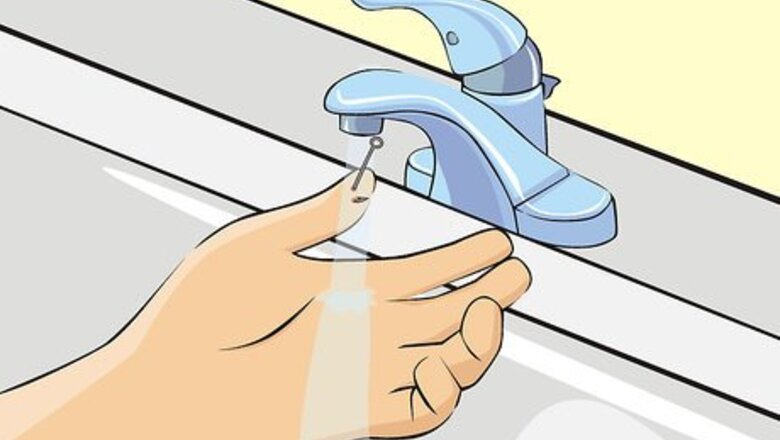
views
Pushing the Hook Through
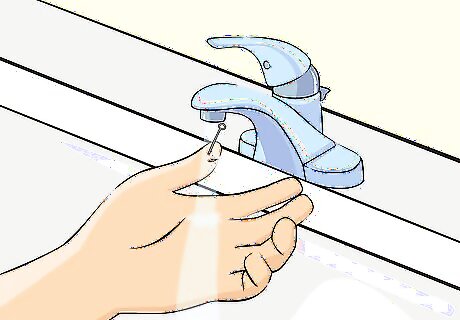
Clean the area. Before attempting any removal, rinse the hook and the appendage with clean water to remove any debris from the hook and the wound area.
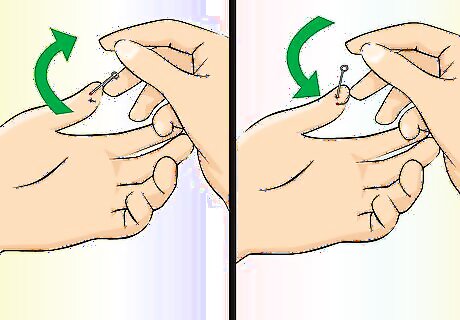
Push the hook through. Carefully push the hook through your finger, toe, etc. until it pushes through the other side. It hurts, but it's better than ripping it out the way it came. If the barb has not fully entered the skin, just pull the hook out carefully. It will hurt, but what do you expect? You have a fishhook in your hand.
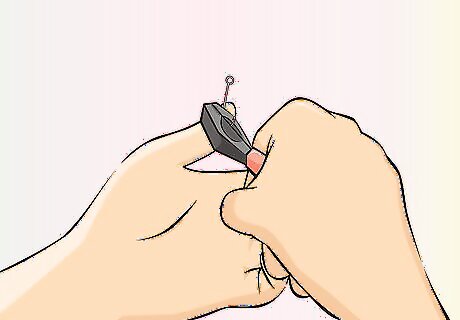
Cut the barb. Take a pair of wire cutters and cut the barb off the hook. This will help you remove the hook without sustaining further damage to the affected area.
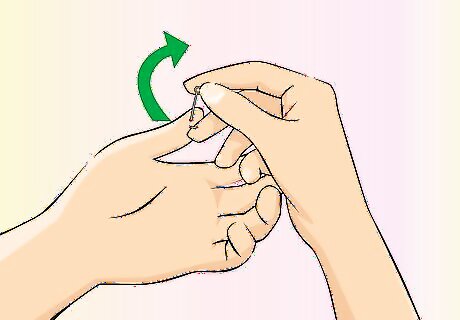
Pull out the remainder of the hook. This will hurt, but it is still way better than ripping the hook out. You want to minimize the amount of damage the hook does to your skin.
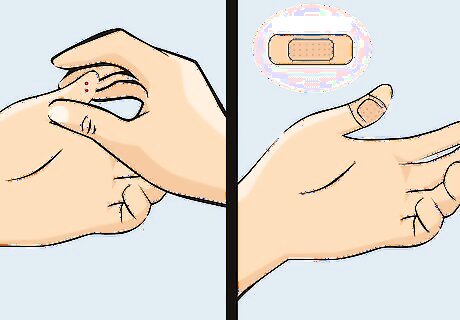
Stop the bleeding. If the wound is bleeding heavily, apply pressure to the wound until the bleeding slows down or stops. This may take several minutes to half an hour. If the bleeding has not slowed down in that period of time, you may need to seek medical assistance. If you have access to non-stick gauze or non-adherent bandage, apply them to the wound. These can help stop the bleeding without sticking.
Using the Needle Cover Technique

Evaluate the wound. If the barb is not too deep in the skin or tissue of your finger, you may wish to try using a needle to ease the hook out. This works best on a large hook with a single barb. Don't forget to clean the area before attempting removal. Flush the wound with water to clear out as much dirt and debris as possible.
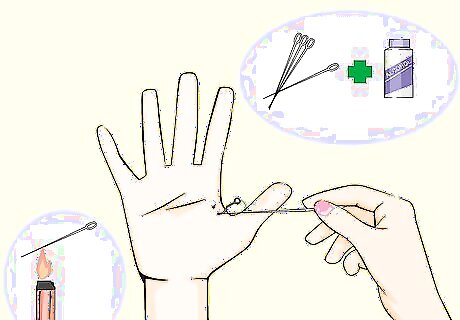
Insert a needle into your finger, following the entrance wound of the hook. The needle should follow an angle that is parallel to the hook, gently pushing down on the hook to make enough space for the needle to slide over it. You will use the tip of the needle to press down on the barb of the hook so that you can slide the barb out without it catching on your skin. A sterile, 18-gauge or larger needle should be used if possible — this method may not work otherwise. You can sterilize the needle with rubbing alcohol. If you don't have access to alcohol, you can hold the tip of the needle into a flame (as from a lighter) until the metal glows red.
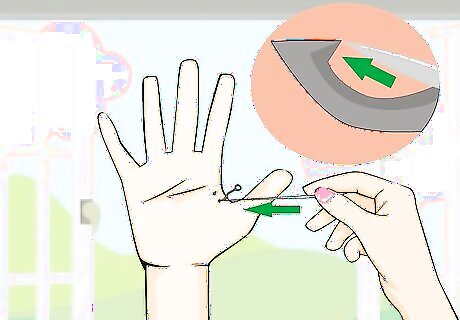
Press the tip of the needle down to disengage the barb. Use the tip of the needle to cover the barb and then press down slightly so that it disengages from the tissue in your finger.
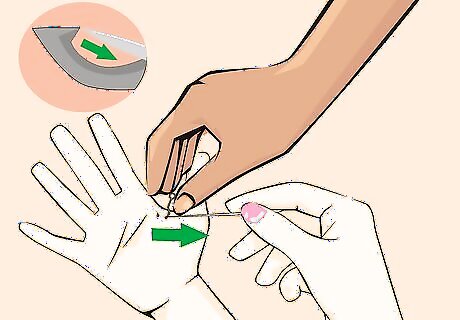
Pull the needle and hook out at the same time. Slowly back the needle and hook out of the entrance wound. Both instruments need to be removed together, as the needle tip is keeping the barb from damaging the surrounding tissue. Make sure you are putting adequate pressure on the needle and hook.
Yanking Out the Hook
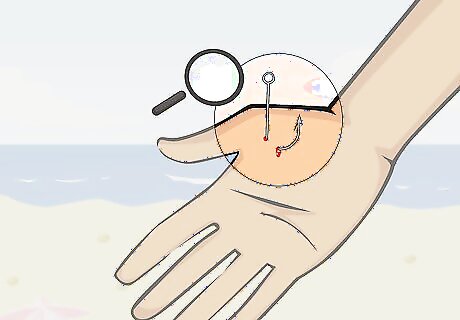
Assess the wound. Figure out how deep the hook is stuck in your skin. If the hook is stuck deep in the tissue, simply removing the barb and pushing the hook through will not work. If this is the case, you will need to an alternative method to remove the hook.
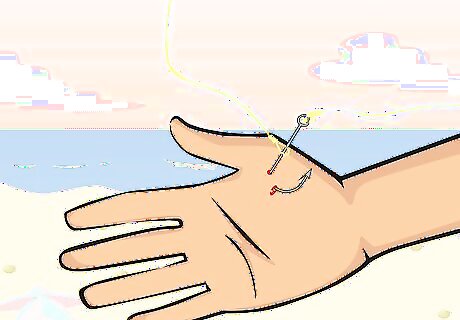
Attach fishing wire. If the hook is stuck in deeply, take a foot-long piece of fishing line and make a loop around the bend of the hook. Try to do this without moving the hook around too much. You don’t want the injury to hurt more or get the hook stuck in deeper because you were being careless.
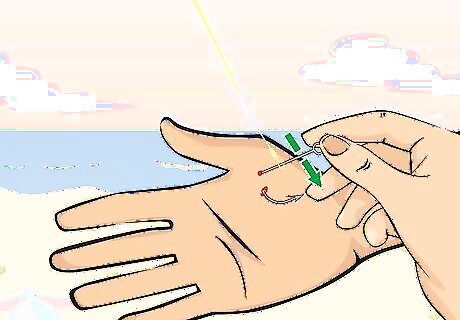
Apply pressure to the hook. Hold string in one hand and push down on the eye of the hook with the other hand. Essentially, you are trying to keep the hook exactly where it is for the moment. Again, make sure you don’t push the hook in deeper when applying pressure to the eye of the hook.

Distract the patient. Whoever has the hook caught in his skin is not going to like what comes next. Have him focus on something else, look away, or tightly close his eyes. You may want to have the individual take a shot of alcohol, if available, to help take the edge off of the pain.
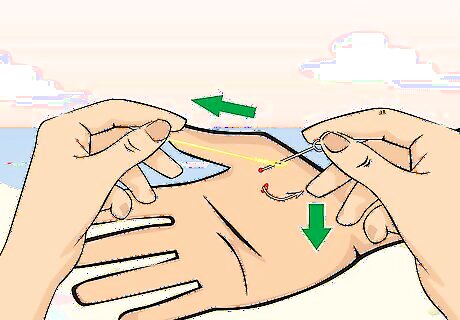
Yank the string. Pushing down on the eye of the hook keeps the barb from ripping a much larger hole on the way out. While still applying pressure to the eye of the hook, yank as hard as you can on the fishing wire you attached to it. This will rip out a sizable chunk of skin, but the hook will come with it. Be aware the hook can spring out with a lot of speed. Make sure the remover and bystanders are as clear as possible from the trajectory of the removed hook. Irrigate the wound as soon as the fish hook is removed by pouring clean water, wound cleanser, or saline solution on it. Let it bleed freely for a minute or so.

Apply pressure. Once the wound has been irrigated, make sure to hold pressure on or below the cut to stop severe bleeding. Make sure to apply pressure for five minutes to 30 minutes after ripping the hook out. If bleeding has not slowed by then, you may need to seek medical assistance.
Caring for the Wound
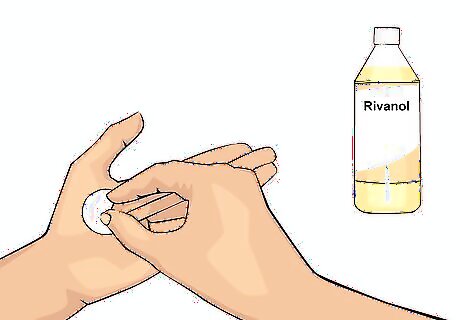
Disinfect the wound. Fish hooks are really dirty. They have been in pond or lake water, filled with bacteria, algae, pond scum and whatever else is living in there. Use a saline solution liberally on the wound to disinfect it immediately after getting the hook out. If you don’t have saline solution on hand, beverages with a high alcoholic content, like vodka or rum, will work in a pinch. This is not an ideal solution, but most fishermen are more likely to have alcohol on their boats than saline solution. Hydrogen peroxide has long been used to disinfect fresh wounds. However, recent studies have shown this product to be largely ineffective. Some studies even suggest that it can cause more damage to the injured area than good.
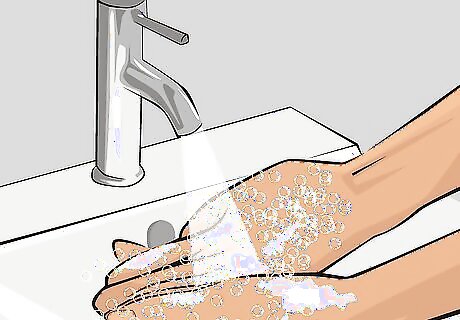
Wash the wound quickly. You will want to rinse out the wound with cool water and antibacterial soap as soon as possible. If you don’t have these things on the boat with you, a bottle of drinking water is a temporary solution until you can reach medical supplies. Wash the wound out as soon as possible after the hook is removed. This will go a long way in helping to avoid infection. Apply antibiotic cream and a bandage. Once you have disinfected and cleaned the wound, apply an antibiotic cream or ointment and attach a clean bandage to the wound. This will help kill any remaining bacteria and help to keep the wound free of dirt. Change the bandage often and allow the wound to breathe from time to time. You may need to get stitches is the wound is particularly deep or large.
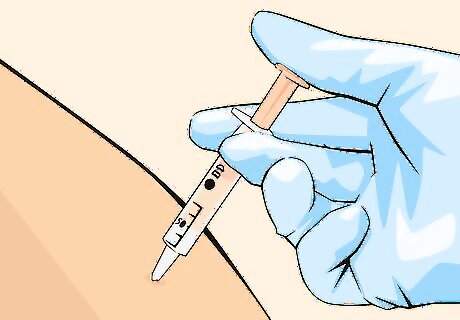
Get a tetanus shot. Fishing hooks are often rusty. Even if the hook doesn’t appear to be rusty, it can still carry tetanus bacteria. So, get a tetanus shot. While no one likes getting shots, it is far better to err on the side of caution because going through treatment once you have contracted rabies is very unpleasant. You have 72 hours to get a tetanus shot after injuring yourself.

Monitor the wound. Most injuries caused by fishing hooks, once sanitized, present very few problems. However, you will want to keep an eye on your wound to make sure it is healing properly. Some signs of infection to look for are: The wound is not healing Swelling Oozing or seeping fluids or blood Warmth emanating from the wound Throbbing at the wound site Red streaks extending out from the wound site If you notice any of these signs, seek immediate medical attention.












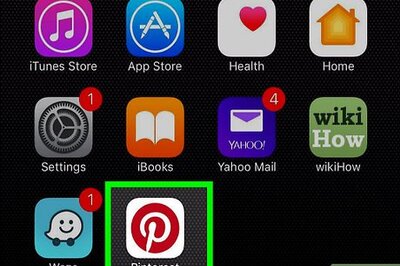







Comments
0 comment